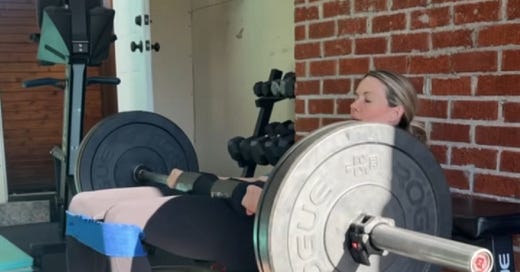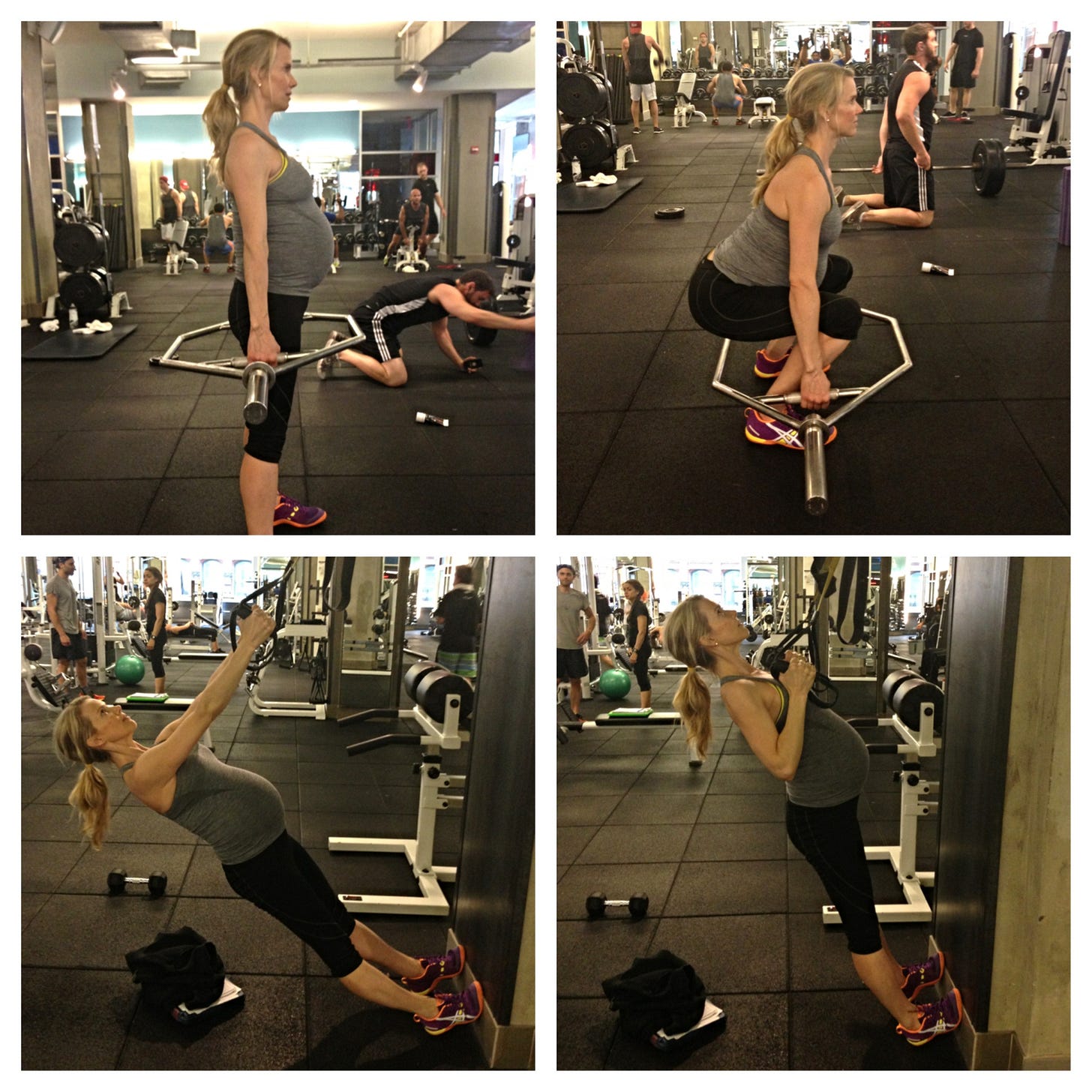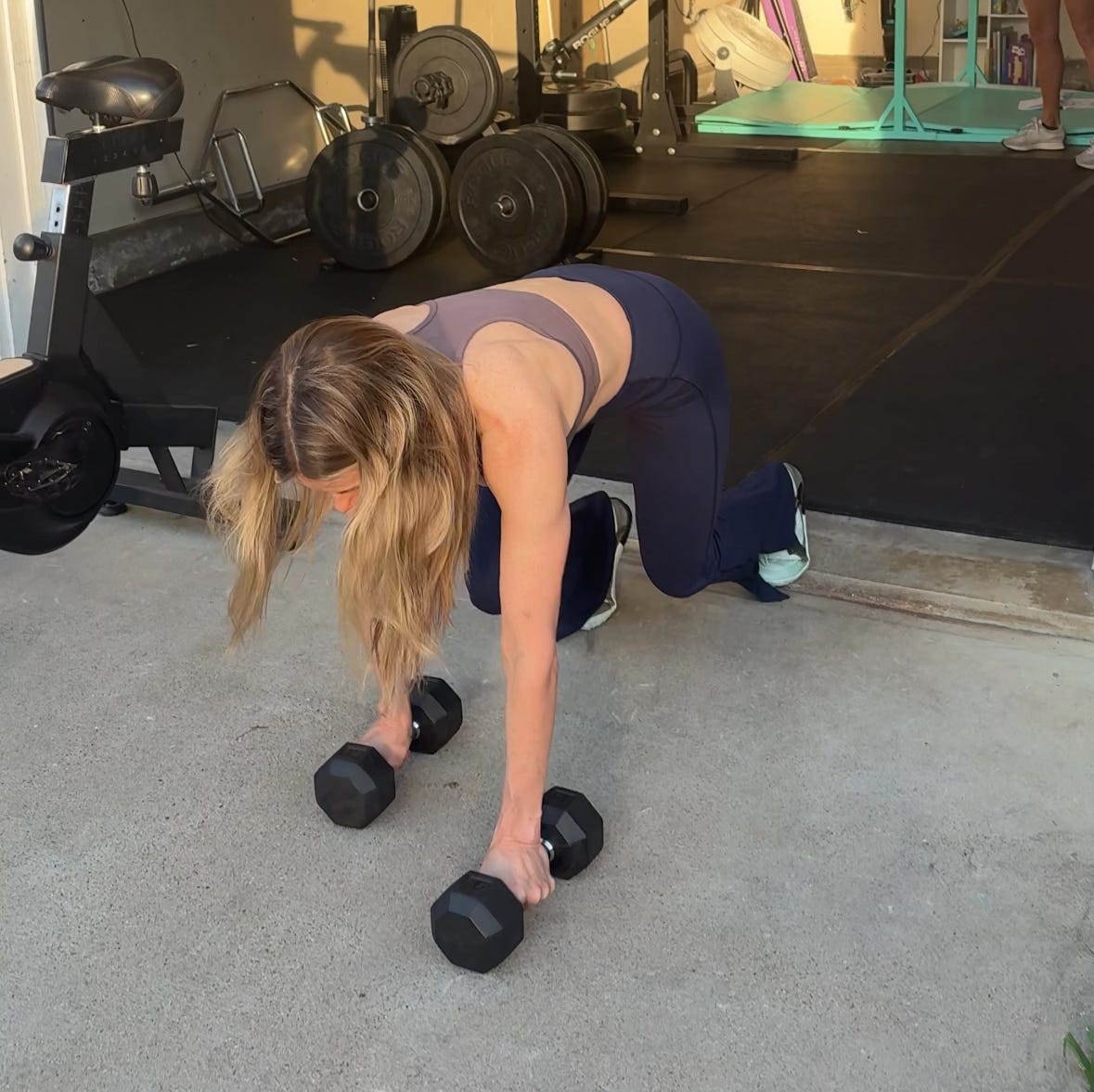I started my career in fitness right after graduating from NYU. For my graduation present, my parents got me a gym membership at Crunch. By then, I was already practicing yoga regularly at a local studio on 2nd Avenue, so I was thrilled to see all the yoga classes offered on Crunch’s schedule.
I first earned my ACE (American Council on Exercise) certification as a personal trainer, as well as my AFAA (Athletics and Fitness Association of America) certification, and began teaching aerobics and other group fitness classes. Then in 1997, a yoga teacher at Crunch named Cyndi Lee offered a teacher training. I signed up immediately. Not long after I started teaching yoga, I was often asked to sub Pilates classes—so naturally, I got certified in that as well.
Since I spent so much time at Crunch, I made strength training a regular part of my routine. I trained with an amazing coach named Garth, who had me doing everything from sparring and lifting weights to cardio sprints. I loved it. Later, I went through a phase where I did less strength work and leaned more into elliptical workouts and cardio machines. Once I began teaching at Equinox, I bought discounted training packages (a huge perk for instructors) and started lifting heavy again, especially with my trainer Sam at the SoHo location. Ironically, Sam was close friends with Andy Speer, who was also training there at the time, and years later, we both ended up at Peloton!
Even when I was pregnant with Sam (my firstborn), I continued lifting heavy. But after becoming a mom, I began to default to yoga and Pilates again, my forever favorites. I’ve always loved movement, but I’ll admit: when it comes to strength, I do best with a coach. I need someone to push me a little harder than I might push myself.
After the twins were born, I started training again with Glen at the Equinox on the Upper West Side, where I was teaching yoga. He was great, but I still struggled with consistency. Then came my Peloton chapter, where I was full-on yoga and doing Pilates on my own until we finally added it to the platform (after much pleading on my part). I dabbled in strength classes, but had no real rhythm.
It wasn’t until I trained for the 2024 London Marathon that I truly recommitted to strength training. I began working with a PT named Cuyler, who helped me lift heavier weights to support my running. As a yogi, my hamstrings are overly lengthened, not ideal for logging miles. But when I combined running, strength, yoga, and Pilates, I felt stronger, more balanced, and in peak form when it came time to run in April 2024.
Now that I’ve turned 50, I feel more deeply than ever how important it is to build and maintain strength. When I don’t lift at least two days a week, I feel the difference: I’m more prone to injury, my metabolism slows, and I don’t feel as powerful in the practices I love most.
I lift heavy now so I can flow with ease, so that chaturangas don’t feel like a struggle. Yoga emphasizes pushing movements, but strength training gives me the balance of pulling and grip strength, which becomes more important as we age. I lift because Pilates gives me deep core control, but lifting adds another layer of functional strength, especially in my abs and back.
I lift because it protects my joints, supports my bone density, and helps regulate my hormones. I lift because I want to be able to do the things I love, not just now, but for decades to come.
And I lift heavy because I know the science: progressive overload is the key to muscle growth, longevity, and vitality, especially for women over 50. This is why I am more committed to strength training now than ever before.
As we age, we naturally lose lean muscle mass in a process called sarcopenia. Starting as early as our 30s, we lose about 3–5% of our muscle mass per decade, and that decline accelerates after age 50. Less muscle means a slower metabolism, more joint stress, decreased mobility, and a higher risk of injury.
You can reverse a lot of that loss and even build new muscle by incorporating regular strength training, which is super cool!
Here’s what lifting heavy (or heavier than you're used to) can do for you:
Boosts Metabolism and Supports Weight Management
Muscle is a metabolically active tissue. The more you have, the more calories you burn and even at rest. For women going through perimenopause and menopause, this becomes especially important. Strength training helps counteract the common metabolic slowdown and helps manage body composition in a sustainable, empowering way.
Improves Brain Function and Mental Health
Strength training doesn’t just build your biceps; it also sharpens your mind. Studies show it improves cognitive function, reduces anxiety and depression, and increases confidence and resilience. I feel more grounded, focused, and present when strength is part of my weekly rhythm.
Increases Bone Density and Reduces Injury Risk
After menopause, women are at higher risk for osteopenia and osteoporosis. Lifting weights—especially using progressive overload—stimulates bone growth and improves joint stability. Think of it as armor for your bones. If you want to continue doing the things you love, like walking, yoga, running, chasing after kids and grandkids, this matters.
Enhances Performance in Everything Else
I lift so I can move through yoga flows with more ease and less effort. I lift to support my core for Pilates. I lift so my running stride is stronger and more efficient. Whether you're a casual walker, a cyclist, a dancer, or someone who just wants to carry groceries and lift things without pain, strength training makes life easier.
Protects Against Falls, Fractures, and Frailty
Strength training builds balance, coordination, and proprioception. It trains your body how to stabilize, catch yourself, and recover, which are three critical abilities that help prevent falls, fractures, and the slow decline that too many people accept as “normal aging.”
Helps With Hormonal Health and Blood Sugar Regulation
Resistance training improves insulin sensitivity, balances blood sugar, and helps regulate hormones like estrogen, testosterone, and cortisol. It’s one of the most powerful things you can do to reduce your risk of diabetes, heart disease, and chronic inflammation.
If strength training intimidates you, know this: You don’t have to deadlift twice your body weight or do barbell squats to reap the benefits. You just need to start challenging your muscles in new ways and with proper form, consistency, and progression. I’ll share another article soon on how I balance my week’s worth of workouts, incorporating strength, yoga, Pilates, and cardio, and what supplements I use and meals I love to fuel my performance. AND get ready for some exciting things coming soon!
Keep reading with a 7-day free trial
Subscribe to Kristin McGee Movement to keep reading this post and get 7 days of free access to the full post archives.







